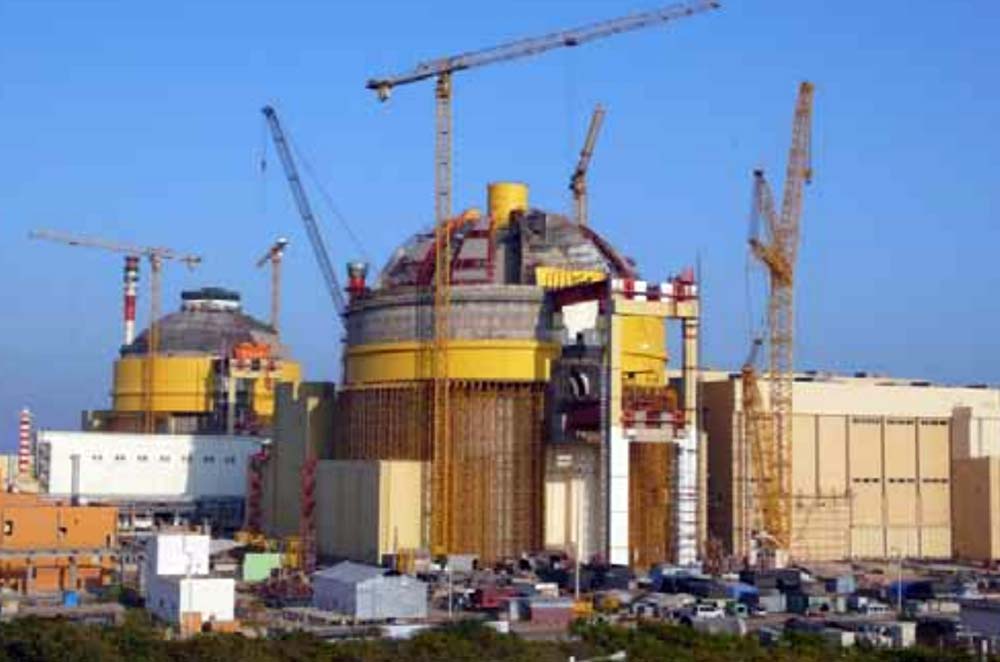- Cover Story
- Governance
- Globe Scan
- Corruption
- State Scan
- Talk Time
- Cover Story
- Governance
- Globe Scan
- Corruption
- State Scan
- Talk Time
Recent Posts
© Copyright 2007 - 2023 Gfiles India. All rights reserved powered by Creative Web INC.GovernanceStrengthening the AERB
A review of the radiation regulatory regime is a must and it is hoped that the proposed Nuclear Safety Regulatory Authority Bill will ensure this
Devender SinghJanuary 9, 20145 Mins read109 Views
 The Fukushima nuclear incident renewed concern about nuclear plantsWritten by Devender Singh
The Fukushima nuclear incident renewed concern about nuclear plantsWritten by Devender SinghRADIATION and radioactive substances have many beneficial applications, ranging from power generation to uses in medicine, industries and agriculture but the risks that arise are enormous, often transcending national borders. Radiation risk management, therefore, necessitates international co-operation to promote and enhance global safety and mitigate harmful consequences. In order that the radiation regulator acts independently, countries such as Australia, Canada, France, the United States of America and even Pakistan have conferred legal status on their nuclear regulating bodies as stressed by the International Atomic Energy Agency (IAEA). In India, the Atomic Energy Regulatory Board (AERB) was set up in 1983 to carry out regulatory and safety functions as envisaged in the Atomic Energy Act, 1962. Surprisingly, the AERB remains a subordinate authority under the Department of Atomic Energy (DAE) though India has ratified the Convention on Nuclear Safety. A regulatory body must be equipped to exercise its key regulatory functions, namely, standard-setting, authorisation, inspection and enforcement and must possess the core values of competence, independence, stringency and transparency.
A review of the performance of the AERB recently by the PAC found glaring deficiencies and lacunae with respect to the regulatory framework for nuclear and radiation facilities; development of safety policy, standards and codes; weak monitoring of radiation facilities, and so on. AERB’s independence is circumscribed by the absence of institutional separation of regulatory and non-regulatory functions; absence of a fixed term of office of the Chairman of AERB; dependence on DAE for budgetary and administrative support; and apparent conflict of responsibilities as the Chairman, AERB, reports to the Chairman, AEC. The penalty for contravention of the provisions of the Act and Rules made thereunder remains abysmally low at a maximum fine of Rs. 500, which by no stretch of imagination can be construed as a deterrent. More so, the penal provisions were never invoked, rendering it virtually a dead letter. The need for hastening the process of development of safety documents, codes, standards, guides and manuals was stressed by the Meckoni Committee Report way back in 1987 and the Raja Ramanna Committee in 1997. A consolidated safety policy document is yet to be brought out.

Construction of the Koodankulam nuclear power plant in progress It is noteworthy that, subsequent to the Fukushima nuclear incident, the AERB set up a high-level committee on nuclear safety but the recommendations are said to be under implementation. Another serious problem bedevilling the AERB is lack of manpower, compounding the gap in the regulating and monitoring regime. This needs to be addressed as the nation can ill afford to take any risk, given the constantly increasing application of radiation, especially in fields like medicine, industry and agriculture. There is no system in place for monitoring the expiry of authorisations and their renewals with instances of protracted delays for periods as long as 24 years. Alarmingly, 70 out of 135 Gamma Chamber units continue to function without valid authorisations. Subsequent to the Mayapuri incident of April 2010, the AERB has taken steps to ensure that operational gamma chambers are subjected to close regulatory monitoring and nonoperational ones are safely disposed of within a reasonable timeframe.
THE PAC noted that the regulatory mechanism concerning X-ray units was virtually non-existent. Out of a total of 57,443 medical X-ray facilities operating in the country, only 5,270 units had been registered and were under the regulatory control of the AERB. In other words, 52,173 units or 91 per cent of the total units are operating without registration. The AERB admitted that, with its very limited workforce, it was impossible to regulate so many X-ray machines. The accelerated usage of ionising radiation, such as medical X-rays, as an essential diagnostic tool poses grave risks to the health of medical workers and the public in the vicinity of these facilities. Surprisingly, even after the Supreme Court directive in 2001 for setting up a Directorate of Radiation Safety (DRS) in each State for regulating the use of medical diagnostic X-rays, only Kerala and Mizoram have complied so far. From 2005-06 to 2011-12, regulatory inspections had been made of only 15 per cent of both industrial radiography and radiotherapy units having high radiation hazard potential. Apart from this alarming shortfall, the frequency of regulatory inspections of such facilities is yet to be fixed in spite of prescribed international benchmarks.
As regards radiological exposure of the public, it is heartening to note that during the period 2005-2010, the effective exposure was far less than the prescribed annual limit of one mSv (Milli Sievert) in all nuclear facility sites. However, as the Health, Safety and Environment Group of the Bhabha Atomic Research Centre (BARC) carries out environmental surveillance through its Environmental Survey Laboratories (ESLs), the authority of the AERB with regard to environmental surveillance apparently weakens. Safe disposal of radioactive waste is another concern, exacerbated by the tragic Mayapuri incident in 2010, where one person died and several were injured. Of course, the incident was a case of a legacy source, which occurred before the regulating regime came into being. It is also heartening to note that the radioactive waste control management of our nuclear power plants (NPPs) and fuel cycle facilities has an impeccable record and the same needs to be maintained scrupulously.
Given the wide uses of radiation in various fields apart from the state-owned NPPs, the AERB should be accorded independent legal status for effective monitoring so as to ensure radiological protection of workers in NPPs, and entrusted with the responsibility of environmental surveillance with the close cooperation of ESLs. A comprehensive inventory needs to be prepared of all radioactive radiation sources across the country indicating the suppliers/manufacturers and suitable awareness created for safe handling and disposal of radioactive waste and to be updated regularly.
Systemic and well-conceived linkages need to be established with schools and colleges and communities for disseminating greater awareness about the advantages of atomic energy and the safeguards provided against radiation and radioactive substances and appropriate curriculum must be included in NCERT/ CBSE syllabi for enhanced sensitisation of impressionable young minds about the lurking dangers of radiation and over-exposure as also potential application with adequate safeguards.
WE also need to strengthen the regulatory aspect of emergency preparedness in the area of other radiation facilities— prescribe mandatory safety codes/ procedures and emergency preparedness plans based on strict assessment of risk factors; and put in place effective control mechanisms for securing compliance to the prescribed safety codes in accordance with the Nuclear Safety Convention. An effective legislative framework also needs to be provided for decommissioning of NPPs. Any NPP or nuclear fuel cycle facility, after its life is over, needs to be decommissioned, decontaminated and demolished. The role of AERB with reference to decommissioning, therefore, needs to be strengthened and subjected to international peer review and appraisal to derive assurance of its effectiveness. The PAC was assured that this would be done once the Nuclear Safety Regulatory Authority Bill was enacted in the form recommended by the Standing Committee of Parliament on Science and Technology. One hopes that once the law is enacted, the AERB will take care of all these concerns and emerge as an independent and credible nuclear regulatory authority.
This article is based on the 90th report of the PAC presented to Parliament on December 9, 2013. The author is a senior parliamentary official and a student of constitutional and parliamentary studies. The views expressed here are personal. He can be reached at dsaswal57@gmail.com
Recent Posts
Related Articles
GovernanceNewsBackdoor entry of Private players in Railway Production Units ?
Written by K. SUBRAMANIAN To Shri G C Murmu C&AG Dear Shri Murmu,...
ByK. SUBRAMANIANFebruary 22, 2024GovernanceNailing Labour to The Cross
Written by Vivek Mukherji THEY grease the wheels of India’s economy with their...
ByVivek MukherjiMay 5, 2020GovernanceBig Metal Momentum
Written by GS Sood PRECIOUS metals especially gold and silver are likely to...
ByGS SoodMay 5, 2020GovernanceStrengthening Social Enterprise Ecosystem: Need for systemic support from the Government
Written by Jyotsna Sitling and Bibhu Mishra THE world faces several challenges today....
ByJyotsna Sitling and Bibhu MishraMay 5, 2020 - Governance
- Governance


























































